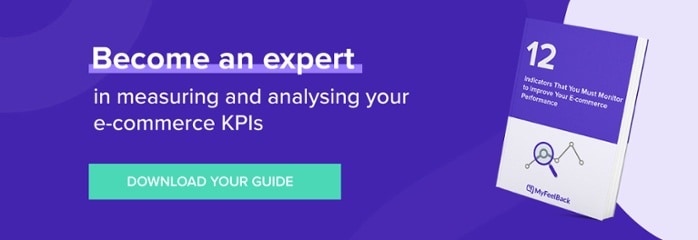How important is conversion rate optimization to your e-commerce business?
The simple answer: it’s everything.
The most effective solution: feedback surveys.
To provide your visitors with the best online experience possible, one which leads to higher conversion rates (i.e. higher profits), you need to have an intimate knowledge of your customers, including their concerns and points of friction with your e-commerce business. To gain this knowledge, an online survey is your best friend.
Econsultancy reports that 82% of online businesses have, in the past five years, placed more emphasis on optimizing conversions. To do this, more than half (58%) are using online feedback surveys, which are believed to be one of the most effective methods for improving conversion rates. However, email surveys can be just as effective with the “average response rate for email surveys [at] 24.8%,” or roughly one in four people.
Regardless of how the feedback survey is distributed – online or via email – e-commerce businesses who invest in gathering customer feedback can better understand, and meet, the needs of their customers. And meeting the needs of customers, which is to say providing the best possible customer experience, is crucial to increasing conversions. Consider the following:
- 70% of buying experiences are based on how the customer feels they are being treated (McKinsey).
- 91% of unhappy customers will not willingly do business with you again (Customer Service Manager).
- 86% of consumers quit doing business with a company because of a bad customer experience (QATC).
- Customer who rates a business 5 on a scale of 1 – 5 is six times more likely to return compared to customers who only rate the business 4.8 (iTrue Review).
What these statistics show is that customer feedback is important. If you don’t know what your customers’ pain points are, and are able to address those problems quickly and efficiently, you’ll never know what you need to do to ensure higher rates of conversion.
Conversion optimization requires customer insights, insights which will enable you to identify barriers to conversion. Once you identify what isn’t working for your customers, you can get to work to ensure that a specific problem will not remain a barrier in the future.
What are Your Customers’ Pain Points?
Every e-commerce business experiences its own unique barriers to conversion, which is why it’s so important to reach out to customers to find out what specific problem(s) they are having. Once you have identified these trouble areas, you will better understand what is important to your customers and what you can do to optimize their experience and, thus, increase conversions.
Understanding customers in order to provide a seamless experience is what will keep them coming back for more. And while every e-commerce business needs to look closely at their own set of unique problems, the following is an overview of four common pain points that any e-commerce business should take into consideration.
1. The Product or Service
Ask your customers questions related to the price, quality, shelf life, and design of your product/service. As well, consider asking why the customer purchases a particular product/service in order to understand their specific needs and how well the range of your offerings is meeting those needs.
Research shows that most customers cite value in price and quality as the most important factor in their decision to make a purchase. 54% of shoppers are more likely to make a purchase if an e-commerce site offers products at a lower price. And thanks to social media, there is no shortage of information available with which customer can compare price and quality. In fact, online comparison-shopping is now the norm with 90% of customers claiming to read online reviews before shopping and nearly the same amount trusting what they read online as much as they would personal recommendations.
Consider asking:
- What are you using [our product/service] for? What problem does it solve for you?
- How is your life better thanks to it? Which tangible improvements in your life or business have you seen?
- What do you like about our product the most?
- Overall, how satisfied are you with the quality of products/services provided by our company?
2. Delivery
Don’t forget to ask about the speed at which your product/service is delivered and whether it was delivered on time. Customers don’t want you to waste their time. They are as adverse to inefficiencies as you are.
64% of retail shoppers think delivery speed is important when purchasing online. Likewise, online shoppers expect ease when picking up or returning items. Econsultancy reports that 44% of shoppers are more likely to purchase online if they can pick up in the store. 62% are more likely to purchase online if they can return the item to the store. And 83% would shop online more, knowing they could have free shipping.
Consider asking:
On a scale of 1 to 10, where 1=Very Dissatisfied and 10=Very Satisfied, please indicate your overall satisfaction with the following:
- Flexibility of delivery schedule
- Ability to meet scheduled delivery date
- Availability of timely information regarding status of order
- Accuracy and completeness of shipments
- Overall satisfaction with the shipping and delivery process
3. Customer Experience
Is your online platform optimized to provide a positive customer experience? Can your customers resolve issues quickly and appropriately? It’s worth asking customers about their experience navigating and checking out from your site.
A poor online experience typically results in shopping cart abandonment. Retail Next reports that $4 trillion in merchandise was abandoned in online shopping carts in 2014. 66% of online consumers abandon their cart because of problems with the payment process. 23% of shoppers abandon their cart if they are forced to register an account. And 28% of shoppers will abandon their shopping cart if presented with unexpected shipping costs. Whatever the reason, 43% of consumers will visit a competitor’s site if their online experience is negative.
Consider asking:
- Which questions did you have, but couldn’t find answers to?
- How satisfied are you with the design and functionality of our website?
- How can we improve our website? Send us your ideas and suggestions.
4. The Brand
Assess the reputation of your brand, and the ease with which you conduct business. What do your visitors think of you, your product, and your customer support? Do they see you as a brand worth their time and money? Why or why not?
One thing is for sure: people are talking about your brand. Social media usage is the number one internet activity and, every day, customers are sharing the experiences they’ve had with you. 2012 American Express Global Customer Service Barometer reported that 42% of people tell their friends about a good customer experience on social while 53% talk about a bad one. And while 55% of shoppers say that positive online reviews influence their buying decision, anywhere from 10% to 15% will flat out refuse to do business with companies who receive negative customer reviews.
Consider asking:
- Did you consider any alternatives to our product/service? If so, which ones?
- What made you decide to choose our product/service? What convinced you that it’s a good decision? Why did you choose us over others?
- Which doubts and hesitations did you have before choosing us?
- How satisfied are you with the breadth of selection in our product/service line?
Transform Your Ecommerce Now
Customer feedback has the potential to transform your e-commerce website. Feedback surveys can help you understand your customers at a much deeper level, enabling you to make smart choices which will lead to higher conversation rates. (Just look at what feedback surveys did for conversation rates at Yankee Candle Company.)
Everybody understands the components of a successful e-commerce business: you need to be able to (1) acquire relevant traffic, (2) convert them to customers at a decent rate, and (3) build loyalty that drives repeat business. To make this happen, it pays to carefully analyze the feedback your customers provide in order to see which conversion rate challenges your business needs to address. The sooner you take aggressive steps to increase conversion, the sooner you’ll see an increase in revenue and overall business success.



















